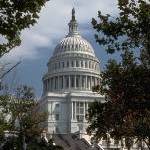 Minutes from the March 13 Federal Open Market Committee meeting were released Tuesday afternoon. Upon perusing the record of proceedings, Wall Street was shocked to discover there was no discussion of monetary easing options. Traders promptly sold. Then, on Wednesday, they sold again.
Minutes from the March 13 Federal Open Market Committee meeting were released Tuesday afternoon. Upon perusing the record of proceedings, Wall Street was shocked to discover there was no discussion of monetary easing options. Traders promptly sold. Then, on Wednesday, they sold again.
“The major support for the economy and for the financial markets over the past two years has been stimulus, and without it, it’s still a question whether these economies can make it on their own,” said Bruce Bittles, chief investment strategist at Robert W. Baird & Co in Nashville. Based on the market’s sell off, clearly, investors don’t believe the economy can stand on its own two feet.
Nonetheless, with $4 dollar per gallon gas already here, well in advance of the summer driving season, additional monetary inflation is not politically expedient at the moment. In several months’ time that will likely change. But first the twisted mix of money and politics will have to get from here to there.
What’s become vastly apparent since the 2008 credit crisis and economic contraction is how enormously dependent both the economy and financial markets are on Fed money creation. Following each monetary experiment, like QE and QE2, when the Fed concludes its bond buying operation the stock market nosedives and economic growth reverses. Now with Operation Twist concluding we’ll, once again, discover that the economy requires a continuing process of monetary inflation to subsist.
Gas, The New Vigilante
Quite frankly, there’ll be no going back to the pre-2008 era. The Fed will never be able to draw down its balance sheet without prompting a depression. Moreover, the Fed will have to continue expanding its balance sheet just for the economy to stand still…let alone achieve 2 percent growth. But that’s not the half of it…
These days, because of massive Fed intrusion into capital markets, the government can run $1 trillion deficits each year with no apparent consequences. Twenty years ago a deficit to GDP ratio above 4 percent would compel the bond vigilantes to sell their treasury holdings and punish the government with rising interest rates. Nowadays, the government can run a deficit that’s nearly 10 percent of GDP and, because the Fed prints money and uses it to buy treasuries, yields on the 10 Year Note are artificially suppressed below 2 percent.
Instead of the bond vigilantes, the new limit on fiscal and monetary prolificacy is being enforced by gas prices. You see, high gas prices are an undesirable consequence of monetary inflation. Rising gas prices represent the infinite supply of digital monetary credits being emitted into existence measured against a more finite supply of resource production.
For now, when gas prices rise too high – generally above $4 per gallon – Fed monetary inflation comes under political scrutiny. The Fed must then pause its stimulus efforts, which results in an economic decline and reduced oil demand. As the economy sputters, and demand falls, gas prices fall too.
By this time, politicians plead for the Fed to “do something.” Of course, the Fed obliges their request and creates money from nothing and uses it to support government debt. Otherwise, the funny money’s pumped into the mortgage market and other credit markets.
Where does this lead?
Monetary Policy, Explained
By late summer, if not sooner, the economy will sputter and the S&P 500 will fall below 1,000, forcing the Fed to execute another round of monetary inflation. We know this because the economy and financial markets have been so distorted by cheap Fed money that they need it just to stand still. Take it away, and things get bad real quick.
So, too, a slumping economy and stock market will be unacceptable to politicians…particularly heading into the presidential election. Incumbent politicians will demand Fed stimulus.
But ultimately, repetitive policies of monetary stimulus will be futile. Here’s why…
“There is no means of avoiding the final collapse of a boom brought about by credit expansion,” noted Austrian Economist, Ludwig von Mises, in Human Action. “The alternative is only whether the crisis should come sooner as the result of voluntary abandonment of further credit expansion, or later as a final and total catastrophe of the currency system involved.”
In this enlightened world of a highly managed economy through massive monetary intervention, the Fed is pursuing policies of credit expansion punctuated by brief, episodic, pauses. The objective is to navigate between the powerful forces of deflation weighing on an over-indebted economy and the powerful forces of inflation, namely high gas prices, resulting from mass monetary expansion. In other words, the Fed’s just winging it.
That, in a nut shell, is the current state of monetary policy.
Sincerely,
MN Gordon
for Economic Prism




